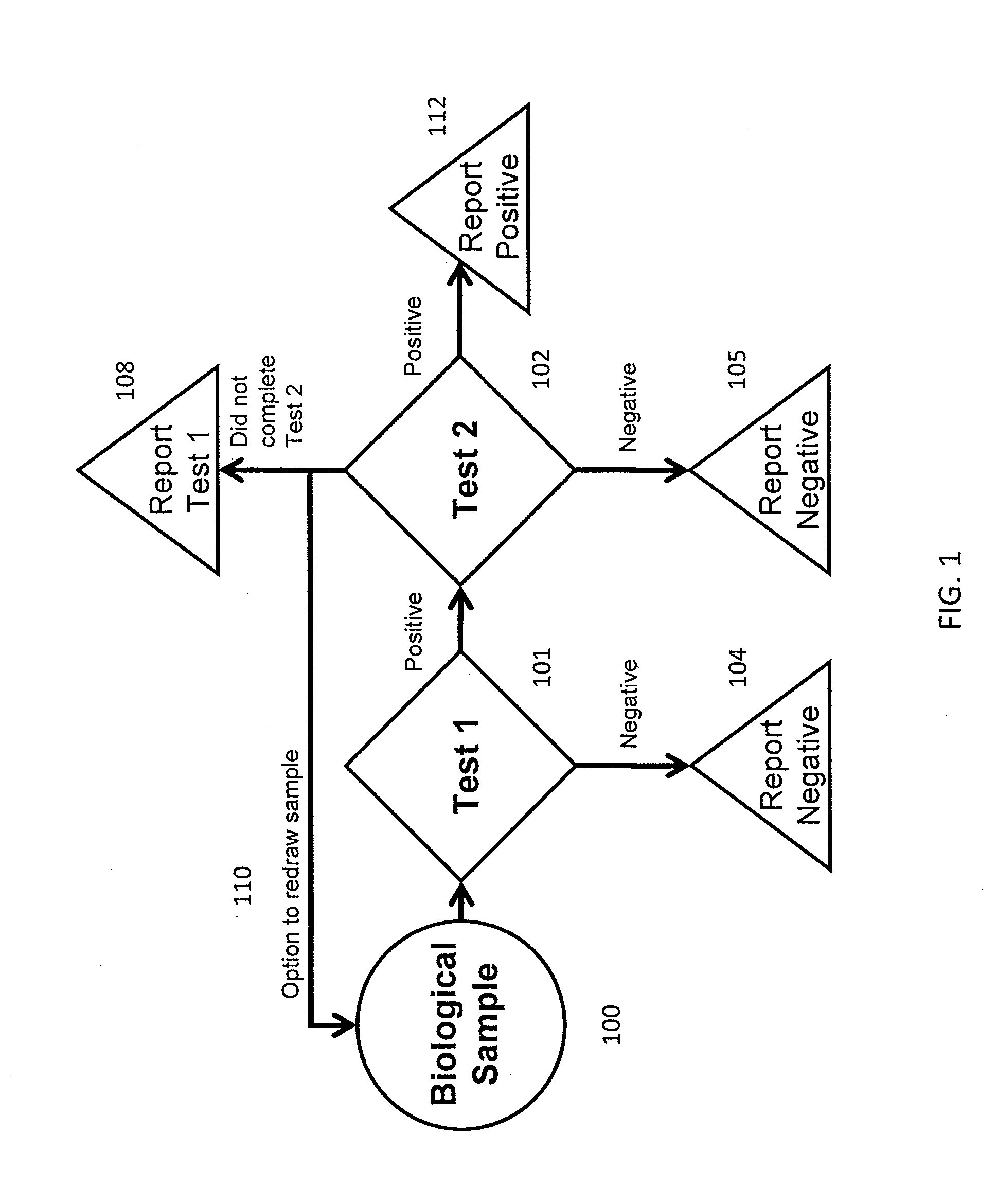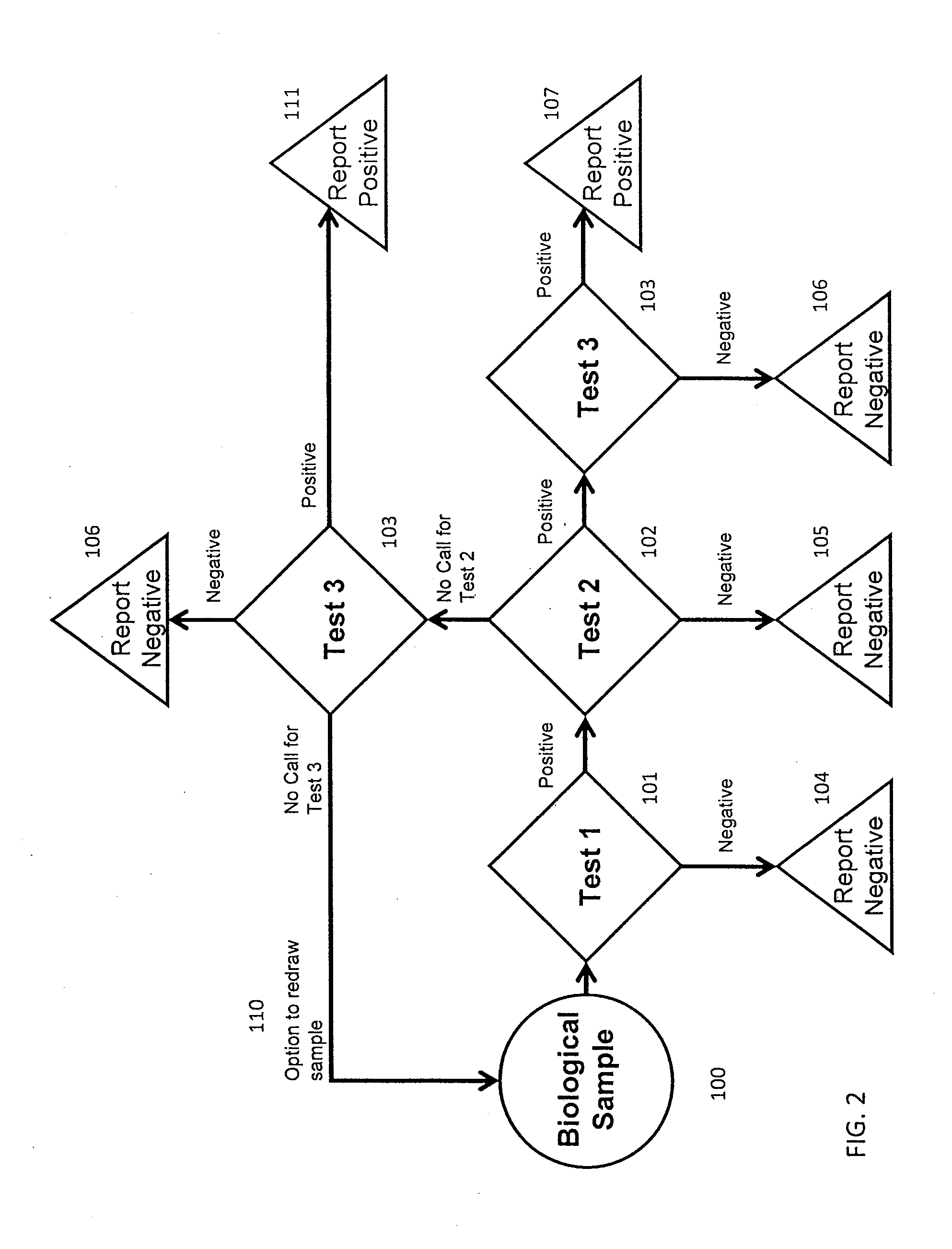Methods for screening and diagnosing genetic conditions
- Summary
- Abstract
- Description
- Claims
- Application Information
AI Technical Summary
Benefits of technology
Problems solved by technology
Method used
Image
Examples
example 1
Integrated Reflex Protocol Improves Performance of Screening Tests for Fetal Genetic Conditions
[0164]To examine the effect of methods described herein on performance of screening tests for fetal genetic conditions, the expected trisomy 21 (Down's syndrome) integrated performance characteristics using an exemplary reflex protocol were estimated.
[0165]Estimated integrated performance characteristics included detection rate / sensitivity, true positive rates, false positive rates, true negative rates, false negative rates, and negative predictive values.
[0166]Table 1 shows the performance of a screening test currently performed in the first trimester of pregnancy. This first trimester screen combines the results from nuchal translucency, Fβ-hCG, and PAPP-A levels with maternal age risk factors and determines an overall risk factor for chromosomal abnormalities. Table 2 shows the estimated performance of an exemplary integrated screening test using a reflex protocol. Test 1 in this embodi...
example 2
Testing Genetic Variations in a Cellular Portion of a Sample
[0168]10 nL of a mixture of fetal and maternal cells that has been enriched for fetal cells is distributed into isolated reaction chambers that each contain 90 nL of appropriate buffers and reagents for cell lysis and WGA, such that each chamber contains an average 1 or 0 cells. Cell lysis and a whole genome amplification reaction (WGA) are performed in each chamber. Following WGA, a portion of each amplified sample is transferred to a second reaction chamber containing primers and probes designed to identify a fetal allele as described herein. Samples identified as containing a fetal allele are then subjected to a second WGA and optionally pooled prior to performing array comparative genomic hybridization (aCGH) to identify a genetic variation as described herein.
example 3
Prenatal Screen
[0169]Blood samples are collected from pregnant female patients. Plasma or serum is extracted from a portion of each blood sample and divided into plasma or serum sub samples.
[0170]PAPP-A and hCG measurements (a “first test”) are taken using a first serum subsample from each patient. Patients identified as having a negative result for the first test are not further tested. A screen for a genetic variation (a “second test”) is then performed in a plasma subsample from each patient identified as having a positive result for the first test. Only patients having a positive result for the second test are advised to consider amniocentesis.
PUM
| Property | Measurement | Unit |
|---|---|---|
| Fraction | aaaaa | aaaaa |
| Fraction | aaaaa | aaaaa |
| Fraction | aaaaa | aaaaa |
Abstract
Description
Claims
Application Information
 Login to View More
Login to View More - R&D
- Intellectual Property
- Life Sciences
- Materials
- Tech Scout
- Unparalleled Data Quality
- Higher Quality Content
- 60% Fewer Hallucinations
Browse by: Latest US Patents, China's latest patents, Technical Efficacy Thesaurus, Application Domain, Technology Topic, Popular Technical Reports.
© 2025 PatSnap. All rights reserved.Legal|Privacy policy|Modern Slavery Act Transparency Statement|Sitemap|About US| Contact US: help@patsnap.com


